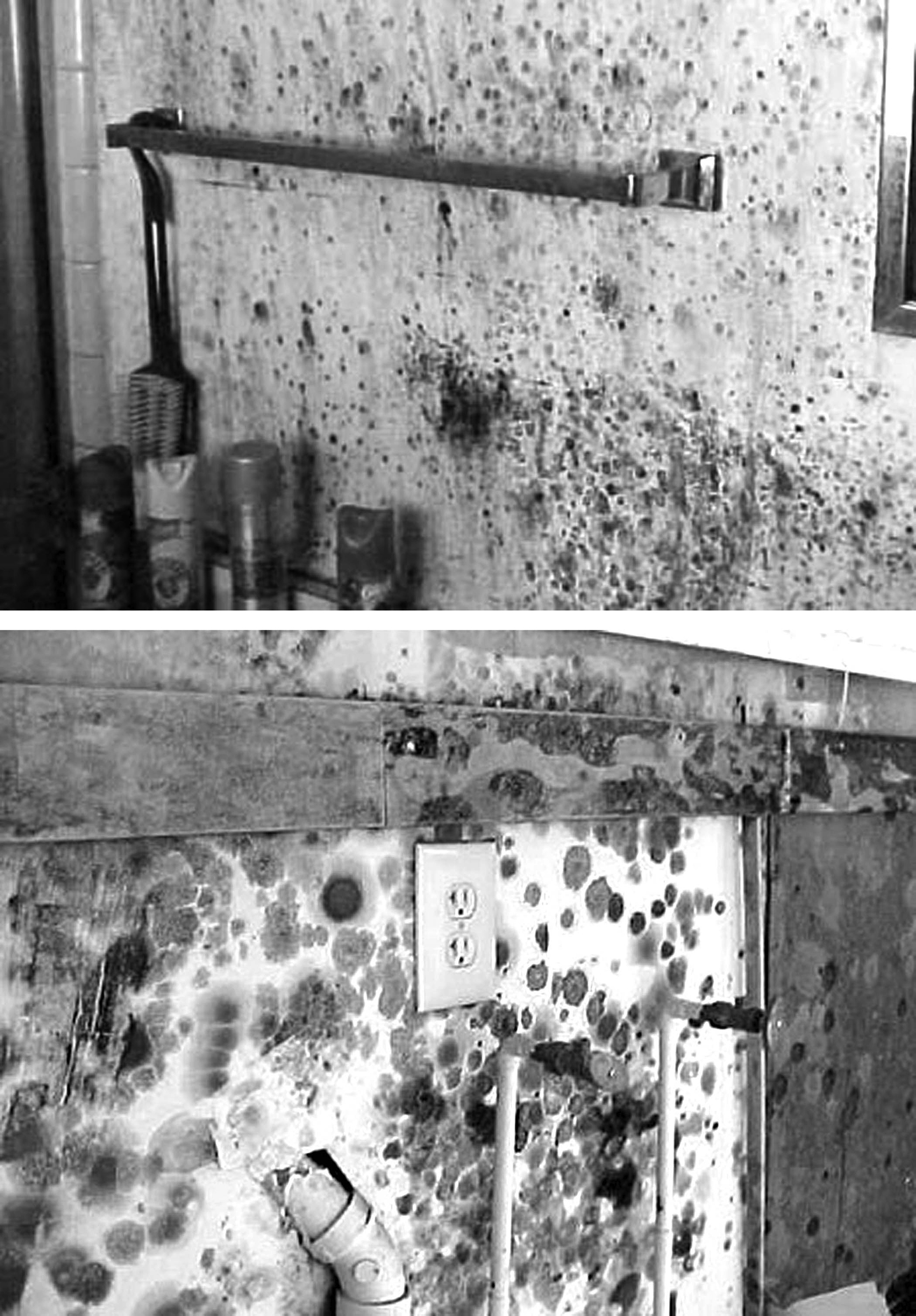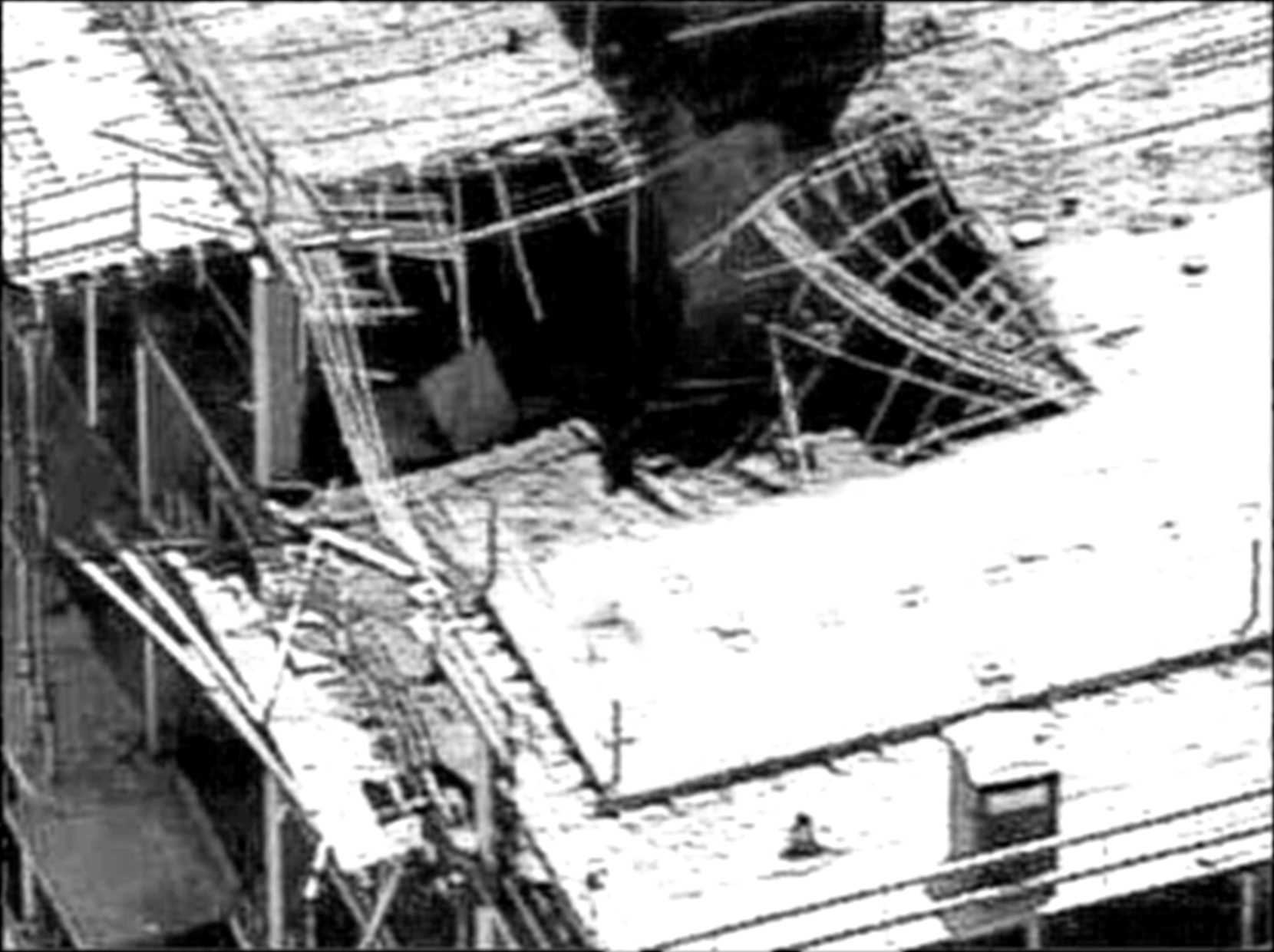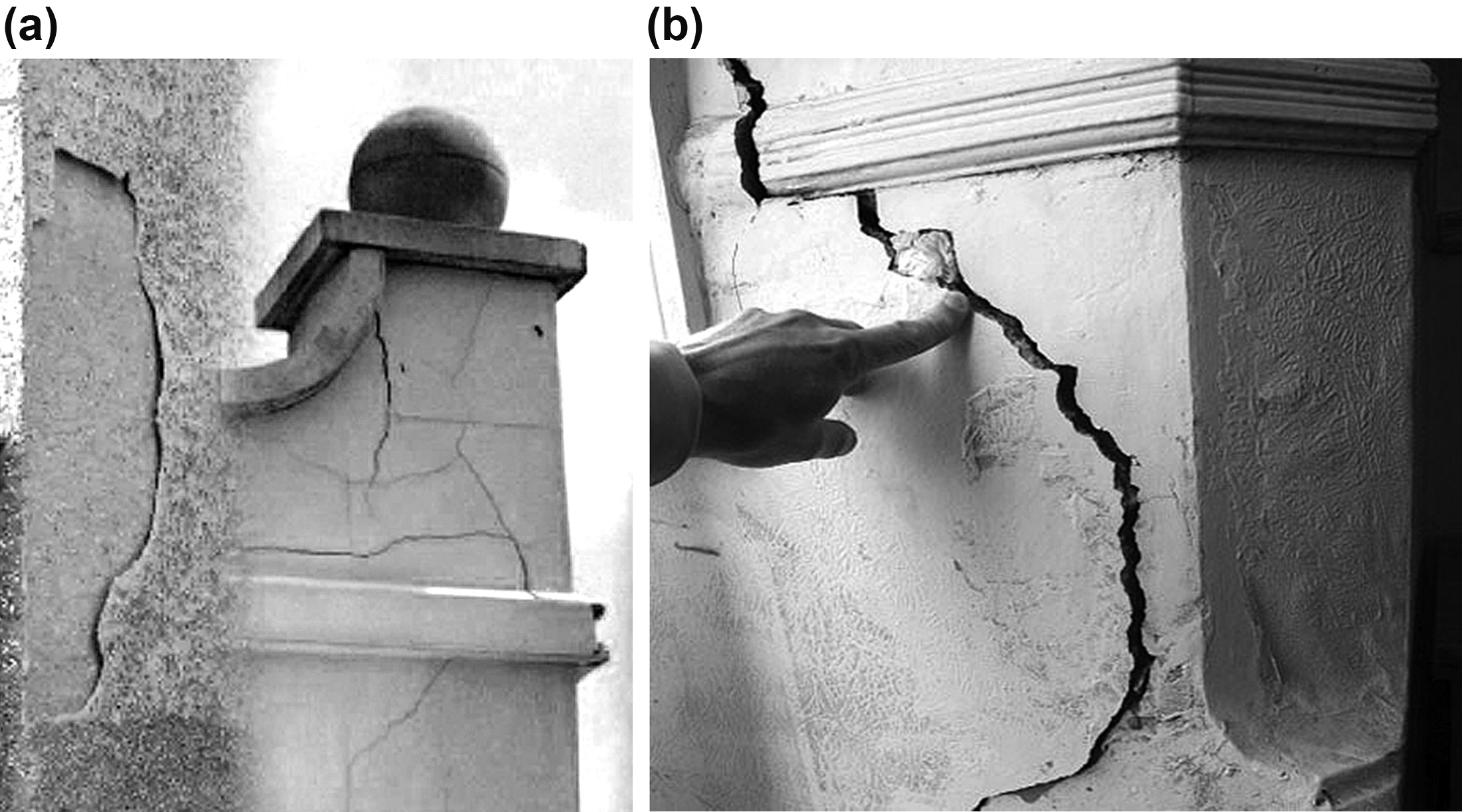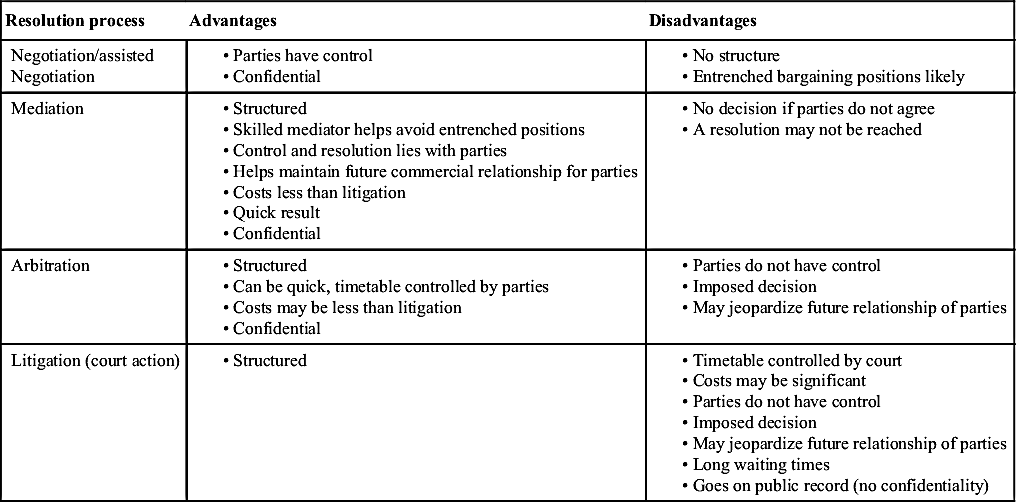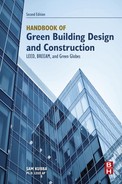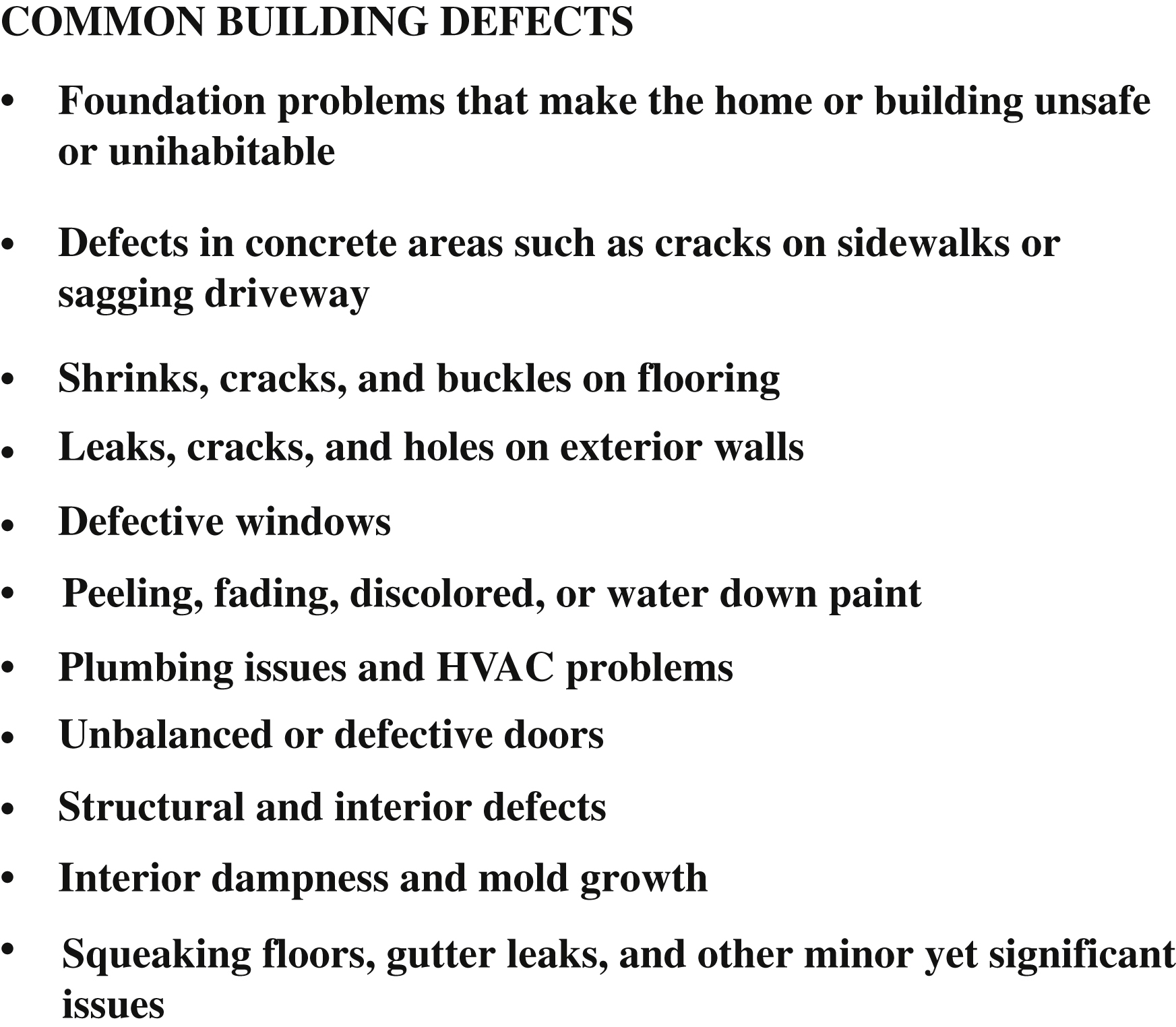The extremely complex field of liability makes it almost impossible to adequately address the endless concerns and legal matters that may arise with regard to liability issues in this section, which is why builders, manufacturers, and designers are strongly advised to consult their attorneys and professional liability insurance carriers for advice on such matters. Although building owners and managers are not expected to guarantee the safety or well-being of their tenants, visitors, and guests, they are required to exercise reasonable care to protect them from foreseeable events. The number of liability lawsuits filed against American companies has increased so dramatically over the last decade that it has become a major concern to all involved in the construction industry.
Attitudes to insurance vary and few fully understand it. To put it simply, an insurance policy consists of a legal contract expressed in relatively complex legal terms. What it does is promise to provide compensation for something (e.g., a potential loss), which may never happen, although in the construction industry can and often does happen. Indeed, contractors lacking adequate insurance risk the success of their business and even potential bankruptcy. Independent and expert advice is imperative. Insurance should be considered as crucial to the continued operation of the business, as few companies and proprietors in the building trade have sufficient capital to meet adversity from their own resources. While there are many inherent risks in building construction projects (including green projects), and which may be inevitable in most businesses today, properly arranged and appropriate insurance can remove or mitigate many of the risks for a small cost compared to the potential devastating liabilities that can ensue by not having it. With most things that are new, there are challenges to be faced, and certainly going green is no exception. From an insurance perspective, Zurich Insurance says that “what matters the most is the claims process. It’s important to ask, are there people in place who know how to order and rebuild to green standards?” Zurich goes on to say, “What we see now is a growing number of insurance carriers providing different coverage forms for green buildings, and the question is how much real coverage they are providing. There are obviously some unique exposures associated with these types of facilities, and the key issue will be how the market addresses those exposures with coverage.”
There are several types of insurance policies commonly used in the construction industry that the contractor and their subcontractors should
have to protect the owner/developer from financial loss, whether in the form of property damage or bodily injury or both. The most common types of insurance policies available to the construction industry include the following:
16.5.1. Commercial General Liability
CGL insurance is designed to protect business owners against claims of liability for bodily injury, property damage, and personal and advertising injury (slander and false advertising). For construction companies, liability insurance is one of the most important types of insurance that a construction company can carry. This insurance type is intended to protect the policyholder and other named insured for claims instituted by third parties. It also protects the contractor and the company from damages or injuries sustained by others on-site due to faulty workmanship, damage to your property and injuries to persons as a result of the contractors operations or their negligence. In most cases, the construction contract will specify that the subcontractors name the general contractor as an additional insured on their respective CGL policies. Both general contractors and subcontractors typically hold CGL policies that cover personal injury and property damage on either an occurrence or claims-made basis. Also, CGL policies contain a general aggregate limit that states the maximum limit that the insurer will pay out during the policy period for damages resulting from bodily injury, property damage, and personal and advertising injury. If for some reason the contractor does not have adequate insurance the owner/developer could be the one financial responsible.
Obtaining General Liability insurance has not been easy for many contractors in recent years due mainly to the construction defect litigation crisis. To address this crisis, some in the insurance industry have started restricting coverage in their General Liability policies by placing numerous exclusions in the “fine print” resulting in lack of coverage for many types of lawsuits. These exclusions typically include but are not limited to EIFS, Mold, Lead, Products-Completed Operations, Prior Completed Work, Damage To Work Performed By Subcontractors On Your Behalf, Subsidence, Contractual Liability Limitation, Independent Contractor
Exclusion, Roofing Operations Exclusions, etc. It is imperative for stakeholders to fully understand the coverage implications of these exclusions if they are contained in the General Liability policy and decide on what action to be taken if any.
An attorney and partner with Howrey LLP, Seth Lamden says, “After nearly three decades of litigation and scores of decisions from nearly every jurisdiction, courts still do not agree on whether a commercial general liability (CGL) policy protects a general contractor against claims for property damage occurring after the construction project is complete when the damage is caused by the defective work of a subcontractor.” Lamden goes on to say, “The battle still rages on as to whether a general contractor should be entitled to coverage for liability resulting from damage to the completed project caused by the defective work of a subcontractor. A close reading of the standard form CGL policy reveals that the policy should provide such coverage. Until courts agree on this issue, however, general contractors should be aware of the insurance law in their jurisdiction regarding how CGL policies are interpreted in the construction context to make sure that they truly are protected from the main risk they face on construction projects.”
16.5.2. Builder’s Risk
Builder’s Risk insurance is generally intended to cover a project owner or general contractor for damages resulting from an insurable incident during the construction of the project. Normally the policy is an all-risks policy, meaning that all incremental costs are typically recoverable from the insurance company unless they are specifically excluded within the policy. A builder’s risk policy normally includes and covers the physical damage to the project, extra expenses, expediting expenses, soft costs and in many cases delay in start-up losses due to flood, collapse, and so forth. The policy may also cover (subject to exclusions and limitations), third party acts and negligence. Builder’s risk insurance is critical to limit the policyholder’s exposure if he or she is looking to build a new building or renovate an existing one. In this respect, builder’s risk policies differ from CGL policies in that they focus on losses incurred by the policyholder as a result of damage to the project during construction rather than focus on losses incurred by third parties. Builder’s risk insurance is generally purchased on a project-specific basis and usually indemnifies against damage and losses due to fire, theft, wind, hail, lightning, explosion, and similar forces. Faulty workmanship and construction defects are generally excluded from coverage, as are earthquakes, flood, acts of war, or intentional acts of the owner. These insurance
policies are designed to insure construction projects, and cover buildings and other structures while being built, including building materials and equipment designed to become part of the building or structure, whether the materials are being temporarily stored, on a delivery truck, on merely on the project lot waiting to be installed. It will usually last from the start of construction to acceptance of the completed project. This policy is typically purchased by the project owner although the general contractor constructing the building may purchase it if it is stipulated as a condition of the contract.
In most builders risk policies, we find less exclusion and many of these policies cover flood, earthquake, testing, and in addition provide broader transit and off-premises coverage. Nevertheless, there is a potential problem that may arise with a separate builders risk policy, which is securing permanent coverage when the builders risk policy expires. Builders risk policies typically contain a provision stating when the coverage will expire, but this provision will vary according to policy. Such provisions may create potential problems should the permanent commercial property insurance not be placed in a timely manner. Furthermore, the owner always has the option to delegate the responsibility for obtaining the required builders risk insurance to his GC. This is not an uncommon practice with larger contractors because the latter are generally more familiar with the market and the type and amount of coverage needed, which is why they prefer to have a degree of control over who will ultimately be insuring the project. It is important to maintain sufficient builders risk insurance and insurance consultants need to be familiar with the construction contract, particularly clauses pertaining to responsibility for procuring adequate and appropriate insurance. It is incumbent on all stakeholders to know not only what coverage is required by the construction contract but also what coverage is available in the marketplace, so that the proposed insurance policy provides appropriate protection to face the many potential challenges and exposures that may arise.
16.5.3. Errors and Omissions (E&O) Insurance
Errors and Omissions policies and coverage are basically malpractice insurance and protect a professional from malpractice claims in the execution of their work and relating to an error or omission in providing professional services that can lead to a lawsuit. Errors or omissions can occur on almost any transaction, although many owners tend to expect and believe that the Architect will produce a perfect set of design and contract documents. Design professionals know this is not possible, yet hesitate to discuss the
potential of errors and omissions with the client. It is in the interest of the design professional that this discussion takes place.
E&O coverage extends to the payment of defense costs, court costs, and any resulting judgments up to the policy limit. E&O insurance, may exclude negligent acts other than errors and omissions (“mistakes”), is most often used by consultants, brokers, and various sorts of agents. Because liability for a design professional’s negligence claims are not addressed in CGL policies, the E&O policy becomes the primary protection tool for these professionals. The category covered by this policy includes architects, engineers, accountants, and attorneys, etc., for alleged professional errors and omissions, which may amount to negligence. Errors and Omissions Insurance protects a company from claims when a client holds the company responsible for errors, or the failure of executed work to perform as promised in the contract. The prudent Administrator or Consultant therefore tries to provide a “safety net” to ensure mistakes are caught and corrected before they cause major problems. Checklists and construction reviews are very helpful in this respect. Owners should also watch out for gaps in coverage, which are common in E&O coverage. A gap in coverage or lapse in coverage may be caused by not renewing the professionals E&O coverage the same day it is to expire. Some carriers will not allow professionals to backdate their coverage to their expiration date without a valid and acceptable explanation (e.g., a natural disaster or personal medical issue that prevented on time renewal) in addition to a signed warranty letter to the carrier stating that the specific professional unaware of any pending claims; for example, if the effective date of insurance is 01/01/2011 and the coverage expires on 01/01/2012, and the professional fails to renew the E&O coverage on or before 01/01/2012 then the professional may have to enroll with a gap in coverage, resulting in a loss of prior acts coverage. This means that the professional will have no coverage for any business placed “prior” to the new effective date. Some carriers, however, may allow a 30–45-day grace period, although it is not uncommon for them not to allow this. But perhaps the most important thing the Administrator can do to control professional liability in this area is to educate the client and reach a clear understanding that errors will occur, and that by working together such errors can be corrected in a timely manner.
16.5.5. Professional Liability Insurance
Unfortunately, professional liability insurance is often an afterthought for large-scale construction projects, especially within this environment of increasing litigation, in which the private practice of a design professional or contractor can be particularly vulnerable, not least because of the damage that even an unfounded lawsuit can do to reputation and financial stability. Business insurance is especially imperative because it offers protection to both the owner and the business with coverage for claims related to allegations of negligent activities or failure to use reasonable care. Also, the latest innovative technologies are encouraging the emergence of new project delivery systems including design–build and public–private partnerships (sometimes known as 3P projects), causing the lines between design and construction to often become blurred, which may be why professional liability risks have become increasingly difficult to insure adequately. To minimize these potential risks to litigation, there are several steps that can be taken. Here, we find five major areas of interaction between the Consultant/Administrator and other members of the project team. These areas are where the Consultant/Administrator can do the most to protect themselves from liability:
• Interpersonal Relationships
• Professional Liability Insurance.
Of note, some insurance policies go further than the standard coverage. In most cases, professional liability insurance coverage does not cover such things as defamation (libel and slander), breach of contract or warranty, security, personal injury, or intellectual property. Coverage can often be added to provide indemnity “for any civil liability.” The operative clause of a civil liability policy is very wide and normally consists of a long list of exclusions so that liabilities, such as employers’ liability and public liability, are not covered under this policy because they are the subject of other forms of insurance. Whatever the case, it is imperative that before signing a policy, it is well understood, preferably with the assistance of an attorney.
16.5.6. Standard Documents and Related Issues
Construction projects in the United States often involve the use of standard documents published by organizations such as the American Institute of Architects (AIA) or the Associated General Contractors (AGC), to name only two. Some project owners nevertheless prefer to prepare their own documents, using a combination of standard and other forms. In both the AIA and AGC documents, project owners are required to provide builders risk insurance covering the interests of all those involved in the project. This policy should generally provide the following:
• “All-risk” or comparable coverage
• Coverage for property at the job site, material stored off-site or in transit
• Coverage for all parties/stakeholders to the contract: owner, lenders, contractors, subcontractors, architect/engineers, etc.
• Permission for waivers of subrogation among the parties
• Coverage for the duration of the project
The construction contract itself, although not a party, remains a crucial element of the construction project. The contractors’ equipment insurance should provide coverage for construction equipment, such as forklifts, bulldozers, mobile tools, etc. The project owner can also add the construction project to its regular commercial property policy, ensuring there is compliance with the above criteria, or alternatively purchase separate builders risk coverage. The builders risk approach has the advantage of having significantly broader coverage than that provided by standard commercial property insurance. In some contract documents such as the AIA document, for example, should the owner decide not to purchase the builders risk insurance, he/she must inform the GC in writing prior to commencement of
the project. This gives the contractor the option of then obtaining the necessary insurance including protecting the interests of all parties and charging this coverage to the owner.
The Joint Contracts Tribunal’s (JCT) in the United Kingdom has a Standard Form of Building Contract, which is considered to be a common standard contract used to procure building work, and which is updated regularly to take into account changes in legislation and industry practice and relevant court decisions from litigation (
http://www.jctltd.co.uk). For example, the JCT 2005 contract looks very different to the JCT 1998, even though the insurance provisions have not been significantly altered, and today most commercial building work in the UK is carried out under a standard form of contract, with or without amendments. The JCT then launched a new set of publications, the JCT 2011 Tracked Change Documents, which highlight the differences between JCT 2005 and the latest 2011 edition. Notably, the JCT recently published its latest 2016 Edition. Here, JCT Chair, Richard Saxon CBE, noted, “It could be said that JCT is one of the only fully industry-wide collaborative forums. As well as helping us to achieve our primary objective of producing our suite of contracts, our collaborative approach has a wider impact in terms of acting as a sounding board for the industry, and enables us to provide products and services for the industry that go beyond standard contract documents.” He went on to say, “JCT was the first standard form construction contract authoring body to produce specific provisions in respect of collaboration, sustainability, the public sector and BIM. The 2016 Edition continues that evolutionary process.”
There are a number of factors that need to be recognized and taken into consideration when taking out an insurance policy for a building project. These include the following:
• That there are several parties that have insurable interests in the overall construction project.
• Materials and equipment can normally be located on or off the job site, and at different times may belong to the owner, general contractor (GC), or subcontractors. Some materials and equipment may be owned by suppliers but these individuals or entities are not considered to be subcontractors. Because their interests are rarely covered by the course of construction policies, they have to be specifically added.
• To make it easier to purchase insurance and to avoid potential gaps in coverage, one of the parties to the contract will usually be required to assume responsibility for insuring the project on behalf of all parties.
• Responsibilities of the various stakeholders, including responsibility for obtaining insurance, are generally clearly articulated and delineated in the construction contract.
In building construction, losses may be the consequence of a number of factors including the following:
• Negligence; lack of skill and care, and failings in design, specification, workmanship, or materials;
• The building construction process—i.e., materials, workmanship, security, heat work, health and safety procedures, etc.;
• Environmental factors including weather, ground conditions, proximity to hazards;
• The inability to complete a contract on time, resulting in financial losses (whether due to insured perils or insolvency of contractor);
• Close on-site proximity of various contractors, subcontractors, and professionals, leading to a significant public liability risk in addition to employer’s liability exposures, the result of carrying, lifting, working at height, confined spaces, collapse, dropping, toppling, etc.
If the GC sustains a loss due to the owner’s failure to obtain or maintain coverage, without notifying the GC, the owner will then have to assume responsibility for all reasonable damages sustained by the GC. To meet the contractual obligations and requirements regarding insurance, the insurance consultant may be required to negotiate modifications in coverage to comply with the contract. In cases where it is not possible to obtain specific coverage, for say, flood or earthquake, then modifications to the construction contract may be necessary and such requirements deleted.
16.5.7. Influence of Green Features on Insurance Policies in the United States
Over the last two decades, green building and the green industry has been able to move deeply into the mainstream, forcing many insurance carriers to sit up and take notice. Still professional liability continues to reflect how the insurance industry as a whole has yet to fully comprehend the changing demands of green building and respond with appropriate insurance policies. A number of insurers such as Chubb, Zurich, and Lexington are realizing the new demands of green building and are finding that they are at the vanguard of the insurance industry. They possessed the vision to respond rapidly to the growing needs and demands of policyholders, while also understanding the risk reduction and economic value associated with green building construction. In this respect, Peter Thompson, Vice President, Chubb &
Son, says, “For years, Chubb has been a leader in insurance protection for green buildings through its commercial property insurance policies,” The Chubb Group of Insurance Companies also say that commercial property owners now have a cost-effective way to repair damaged property using “green” materials and environmentally friendly construction techniques. According to the Chubb Group, a new endorsement “Customarq package policy” is offering commercial property owners a “green upgrade” option “to help pay to repair damaged covered property using environmentally-friendly materials, low-impact construction processes and efficient heating and cooling technology after an insured loss. Chubb will pay the difference between repairing the property to its pre-loss condition and repairing it using green materials and construction techniques, subject to the applicable limit of insurance. The option is available for property that did meet, or no longer met, green certification standards in effect at the time of loss or damage.” “As businesses look to help protect the environment and improve their operations, Chubb continues to innovate around our customers’ desire to go green,” said Bill Puleo, worldwide mono-line property manager for Chubb Commercial Insurance. “Whether businesses wish to enhance their buildings with green features, achieve LEED certification or build green from the outset, the property insurance we provide can be tailored accordingly.”
Another example is Lexington Insurance Company, a Chartis company, which is a world leading property–casualty and general insurance organization serving more than 40 million clients in over 160 countries and jurisdictions which announced on August 2009, the introduction of Upgrade to Green—Builder’s Risk, which provides coverage that supports green building construction and renovation projects registered with the LEED or the GREEN GLOBES rating systems. The upgrade to Green is available as an endorsement to Lexington’s Completed Value Builder’s Risk Policy, and extends coverage to address the risks green buildings face during three key areas of construction: project management and administration, site ecological impacts, and consumption of resources.
Lexington Insurance says, “In the event of a covered loss to a green building, Upgrade to Green provides coverage for the fees of qualified professionals associated with the building’s design and restoration, as well as the costs of re-commissioning building systems and replacing vegetative roofs. Additionally, the product responds to changes to the relevant rating system criteria or loss of anticipated rating points as a result of a covered loss. For example, Upgrade to Green provides coverage if the new rating criteria require more points to achieve the anticipated certification level, or if the
criteria to achieve the same number of points are more stringent and costly. It also provides extra remuneration for reconstruction or rework to secure new rating points if, as a result of covered damage, anticipated rating points are lost and no longer available.”
This is emphasized by Liz Carmody, Senior Vice President, Lexington who says, “We are committed to supporting sustainable development through innovative green products and services,” and “Upgrade to Green, which is part of our Ecosurance portfolio of green products, addresses the unique risks that green construction and renovation presents to property owners.” In the event of a covered loss to a green building, Upgrade to Green provides coverage for the fees of qualified professionals related to the building’s design and restoration; it also covers the costs of recommissioning building systems and replacing vegetative roofs. Furthermore, the product is designed to respond to changes to the relevant rating system criteria or loss of anticipated rating points as a result of a covered loss.
Zurich insurance says that you have to look at potential exposures that are not usually covered by standard builder’s risk and property policies, but that may be unique for green buildings. According to Mike Halvey, Head of Real Estate Zurich North America Commercial, there are three elements that are the most important in “green” coverage. These are as follows:
1. Betterment of the rating system
As the green movement continues to grow, the criteria by which a building can become certified by the U.S. Green Building Council may change. This can adversely affect real estate owners and developers as they may have designed their respective building using previous rating criteria. Zurich’s Better Green coverage for builder’s risk allows you to rebuild your building to the new criteria so you can still achieve your original desired certified status such as Silver, Gold, or Platinum LEED. With the property green coverage, if you lose your LEED certification that qualified you for government tax incentives, utility cost credits, reduced loan rates, or other financial incentives as the result of the loss of or damage to your property, we will pay for your actual loss sustained up to the aggregate limit on the endorsement.
2. Debris recycling
Most builder’s risk and property policies provide for debris removal. However, some of the LEED criteria require that debris be recycled either on the site or taken to a recycling center, which may be more
costly than utilizing a landfill. Zurich’s endorsement offers a broader removal coverage providing for debris recycling and any associated additional costs.
3. LEED-accredited professional and building commissioning expenses
The LEED Green Building Rating System requires that qualified engineers help you with redesign or oversee the repair, rebuilding, or replacement of your building. As these professionals are not always on a contractor’s staff, Zurich’s endorsement would provide coverage for expenses incurred to hire a third-party engineer to assist. As a benefit to our customers, Zurich has risk engineers with LEED-accredited professional designations who can also provide recommendations to ensure that your project is being built to the green standards. Zurich will pay for these expenses and losses up to the aggregate limit provided for under the endorsement.
J.R. Steele, an attorney and LEED AP, points out, “Since green construction, and especially large-scale green construction, is a fairly new phenomenon in the United States, there is very little legal analysis regarding green building disputes. Oftentimes, the problem faced by green building contractors, owners, and design professionals—especially those new to green construction—is that they fail to recognize that there are differences between a “normal” construction project and a green building project. Consequently, parties to green building contracts often rely on standard contracts that do not necessarily address the risks unique to green building projects. Failing to recognize those risks within the contract creates the potential for disputes and litigation down the road. Therefore, one of the keys to a successful green building project is to recognize and deal with the risks of that particular project.” J.R. Steel cites as examples of some of the unique risks parties to green construction projects often fail to address include the following:
• Defining which party is responsible for administrating the LEED certification process, which can be a time-consuming process;
• Defining who is responsible if the project fails to achieve LEED certification and what sort of damages flow from such a failure;
• Confirming that there is adequate insurance coverage, including professional liability insurance for design professionals, that takes into account the green nature of the project;
• Checking warranty and guaranty language to confirm that new green construction procedures or installation materials and/or techniques do not void the warranty or guaranty for a product;
• Dealing with long-term performance goals and length of warranty issues;
• Determining if any intellectual property infringements will result from utilizing new green techniques or equipment and who is responsible for dealing with any infringement that may arise;
• Investigating availability of green construction material and the replacement price for such material; and
• Recognizing the length of time and inspection process associated with LEED certification in the project construction schedule.
From the above examples, it is clear that there are various issues that parties participating in green building projects need to address. J.R. Steel emphasizes that in the end, the parties that will most likely succeed in avoiding costly litigation are the parties that emphasize open communication, clearly define performance expectations, fully examine the risks of the green project, and deal with these issues in their contract.
Indeed, the insurance industry as a whole needs to follow the lead of these “enlightened” insurance companies and embrace green building practices. In some cases, this may require the creation of new add-ons to current polices (which we have already started to see), but what is needed is a more institutional change in valuation and risk assessment that takes into account the sustainable quality of a building project as well as its potential positive impact on the environment. Many of these problems arise when building owners, designers, and builders differ in their interpretation of what constitutes a successful green building, and particularly when building owners fail to explicitly communicate their thoughts at the commencement of the project. Issues of this kind are compounded when the parties are relatively new to the concepts of the green building process.
Two of the main areas that typically need to be addressed are as follows: (1) A building’s failure to achieve a promised level of green building certification and (2) A building’s operational performance. In considering a building’s operational performance, there is some expectation that green buildings will, in addition to reducing environmental impacts, also reduce energy and water costs, require less maintenance and other long-term benefits to the building owner. The point to note however is that while a design may incorporate a wide range of green features, there are numerous considerations between a building’s design and occupancy that can invariably impact the building’s operational performance.
Legal actions may be brought against the building owner/developer, the builder, the professional consultant (e.g., architect or engineer), or the product manufacturer. Sometimes an expert may be used in the pretrial stages, possibly to give an affidavit supporting one or more issues of the case. The expert may also serve solely as an expert witness at trial or the expert may play a combination of these roles. There are also times when an expert will serve solely as a consultant to the lawyer and remain in the background.
One of the important principles by which insurance contracts are governed is the element of good faith. This basically implies that there is a duty on any entity taking out insurance to disclose all material facts and to expeditiously notify the insurer of any events that may lead to a claim. Indeed, the most common problems relating to insurance policies are the failure by a party to make full disclosure of all material facts when taking out a policy and failure to promptly notify possible claims. Insurers seek out any breaches of this duty to try and avoid liability. Also, an insured is required to have an “insurable interest” in the subject matter of the insurance; otherwise the insurance policy is typically considered to be null and void. The insurable interest may pertain to an interest in property or pertain to a liability or potential liability; for example, damages caused by negligence or breach of contract.
This is why the insured can usually recover only what has actually been lost and based on the indemnity principle does not permit to legally make a profit out of the insurance policy. Connected to this indemnity principle is the concept of subrogation, which basically allows the insurer to take over any claims that the insured might have in place against third parties and to receive any payments or compensation made to the insured by third parties. In many instances, insurance policies, construction contracts, and certificates will include what is known as a “waiver of subrogation” (also known as a “transfer of rights of recovery”). This is essentially a process by which insurers are able to transfer risk and to limit the rights of recovery from another party on behalf of the insured. Lawyers often advise their clients to have it built into their policy so that there is not a possibility that they are in breach of contract by forgetting to have it endorsed separately for every job requiring it. Whatever the case, it is strongly advised that prior to finalizing an insurance policy an attorney is consulted. Policies are frequently vague or inconsistently worded and may contain exclusions that limit their usefulness, and therefore parties taking out insurance should always carefully consider the policy wording to ensure that it adequately serves its purpose.
